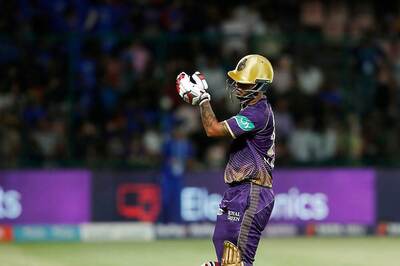
views
Jaisalmer: After camel milk face cream with its anti-wrinkle properties, it is now the turn of ice cream that is supposed to have anti-bacterial properties.
Camel milk ice cream has just been launched in Rajasthan and it could hit your stores soon.
The ice cream comes in two flavours - kesar and strawberry vanilla.
It has been developed by the Rajasthan-based Lokhit Pashu-Palak Sansthan (LPPS), an NGO that supports landless livestock owners.
Participants at a November 6-8 workshop of camel breeders and scientists held near Jaisalmer were given a taste of the just-launched ice cream.
"The ice cream is an absolutely delicious desert treat," said an Italian researcher at the meet, Tommaso Sbriccoli. He said it compared favourably with the gelato-frozen desert in his home country.
Numerous hotels in Jaisalmer are interested in stocking up the camel milk ice cream to attract health conscious customers.
LPPS has launched a two-year project to help traditional camel breeders realise the economic potential of a range of products derived from camels, including face cream and ice cream.
The camel population in Rajasthan is around 400,000, a 50 per cent dip over the last decade, according to the NGO.
It says revival of camel husbandry could be an important tool for supporting livelihoods of the owners in the drought hit and impoverished far western part of Rajasthan.
Camel milk is different from cow and buffalo milk and it’s considered very healthy as it contains enzymes with anti-bacterial and anti-viral properties that help to fight diseases.
The milk also contains insulin, which is helpful in controlling blood sugar levels among the diabetic.
A Rajasthan camel gives around four to six litre of milk a day, according to the NGO, which is examining the possibility of marketing the milk in tetra packs in the near future.
Camel milk is marketed as a health food and beauty product in the Gulf and Africa. According to the UN, the global market potential for camel milk is very lucrative.
At the workshop, camel breeders emphasised that their herds had dwindled in the last 10 years because the grazing areas had been eaten up by agriculture.
"With groundwater levels dropping rapidly, it spells the end of water-intensive agriculture. In this scenario, camel husbandry represents a perfect solution to the chronic water woes of the state," said President of the Rajasthan Pastoralist Development Association, Bagdi Ram Raika.
"We would like to see the camel breeders of Rajasthan make use of their traditional assets and avail themselves of the new marketing opportunities. Our role is to support them in this," said Director of LPPS, Hanwant Singh.
"This project will contribute not only to poverty alleviation but also in conserving biodiversity," said project coordinator of the International NGO League for Pastoral Peoples and Endogenous Livestock Development, Ilse Köhler-Rollefson.
"The camel has been a part and parcel of the Thar desert ecology, and there is danger of it becoming extinct unless ways are found to make camel rearing lucrative. We hope this project will motivate the people to plant trees for camel fodder, which will also help to combat desertification," he said.
Camel breeders were enthusiastic in their response to saving their animals through value addition.
"We would like the government to establish camel sanctuaries. The camel is part of Rajasthan's identity and it should be declared as the state animal," said the owner of a large camel herd, Bhom Singh.



















Comments
0 comment